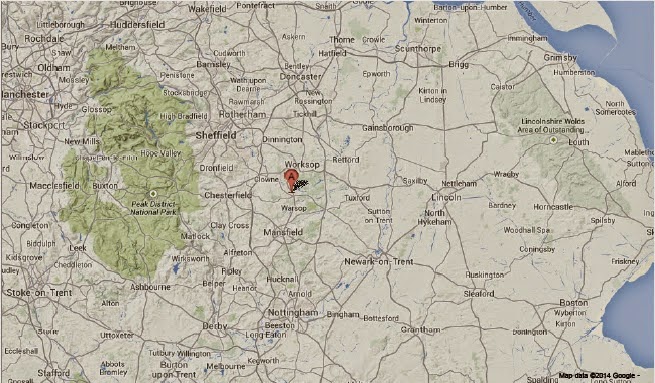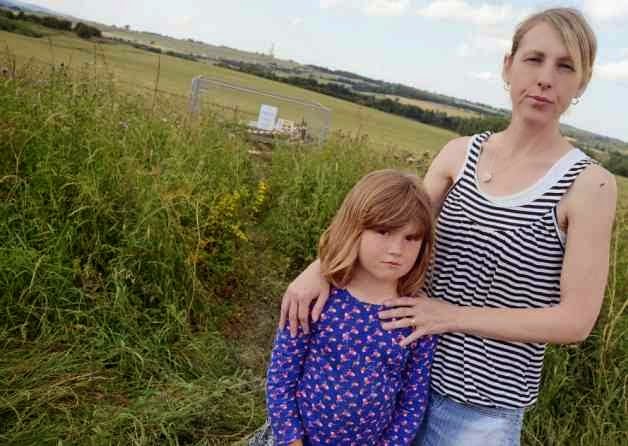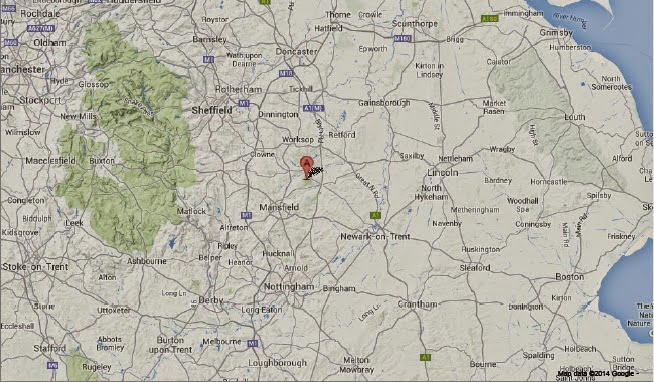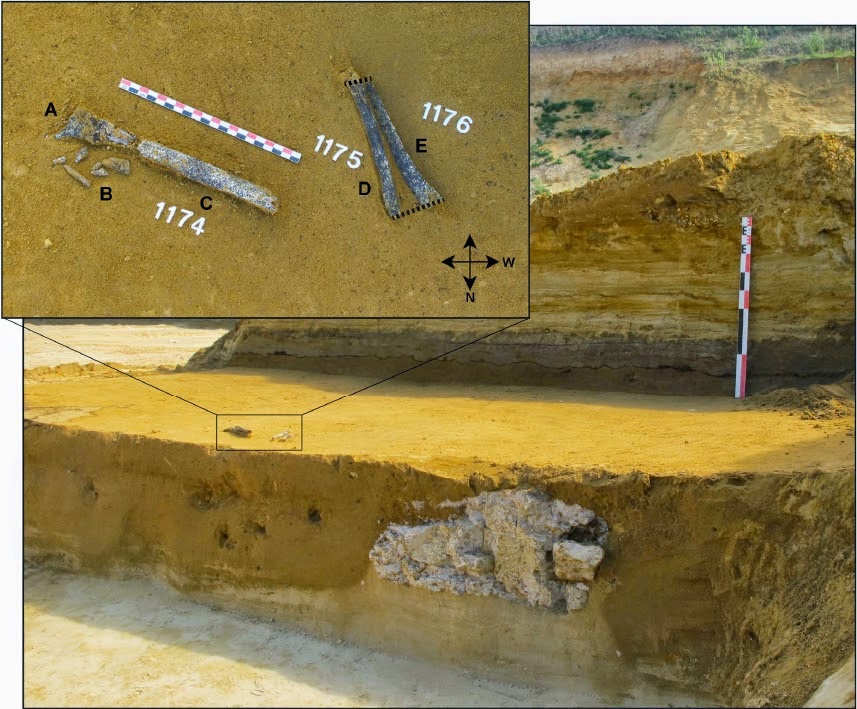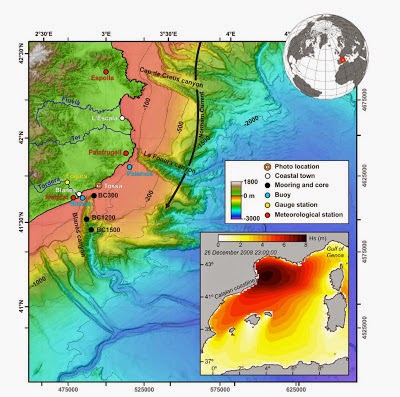The science of palaeoparasitology involves the study of parasite
remains from palaeontological and archaeological sites. This rarely involves
the recovery of whole parasite fossils; the presence of parasites being more
commonly determined from eggs, biomarkers or pathological alteration of the
remains (i.e. damage caused to the living host of the parasite that is visible
in the preserved body). As such identifying specific parasites takes
considerable skill, but is considered worthwhile for the insight it gives into
the lives of both the parasite and the host.
In a paper published in the journal PLoS One on 15 October 2014, MatthieuLe Bailly of Chrono-Environment at the University of Franche-Comte, Michaël Landolt
of Pôle d’Archéologie Interdépartemental Rhénan and Leslie Mauchamp and Benjamin Dufour, also of Chrono-Environment
at the University of Franche-Comte, describe the presence of parasites in
bodies from the Kilianstollen First World War archaeological site in the Alsace
Region of France.
The Killianstollen was a gallery built by German soldiers for use as
a refuge during enemy attacks during the winter of 1915/16. It was 125 m long
and between 3.5 and 6 m beneath the surface. At about 1.30 pm on 18 March 1918
the southern part of the gallery collapsed following heavy shelling by French
artillery, trapping 34 reservist soldiers from the German 94th
Infantry Company. Thirteen of these soldiers were able to escape, but the
remaining 21 were left for dead, eventually being excavated by archaeologists
in 2011.
Le Bailly et al. took
sediment samples from the abdomen regions of three bodies, a 20-year-old
soldier, a 22-year-old corporal and a 35-year-old sergeant. These were solid
samples, which were rehydrated, then crushed and sieved to extract parasite
eggs.
The soldiers recovered during the excavations of ‘‘Kilianstollen’’
in Carspach. Michaël Landolt in Le Bailly et
al. (2014).
No eggs were recovered from the body of the corporal. The body of
the sergeant yielded two eggs of the Human Whipworm, Trichuris trichiura (a parasitic infection, the eggs of which have
been recovered from a wide range of archaeological sites), and one egg of an
unknown Capillariid (parasitic nematode).
Egg of Trichuris trichiura
(53.19 by 27.45 mm) recovered in individual #1019 in Carspach
Alsa‘‘Kilianstollen’’. Scale bar is 20 μm. Matthieu Le Bailly in Le Bailly et al. (2014).
The body of the soldier yielded 5 eggs considered to be from the
same unknown Capillariid as the one from the sergeant. It also yielded one
Tapeworm egg, Taenia sp. (there are
three known species of Taenia that infect humans, all of which could potentially
be present at Kilianstollen), and 180 eggs from the Human Roundworm, Ascaris lumbricoides.
Egg of Ascaris lumbricoides
(66.57 by 53.04 mm) recovered in individual # 1018 in Carspach
‘‘Kilianstollen’’.Scale bar is 20 μm. Matthieu Le Bailly in Le Bailly et al. (2014).
A wide range of Capillariid Nematodes infect both human and animal
hosts. Le Bailly et al. compared the
specimens from Kilianstollen to a wide range of these, but were unable to make
a positive identification. However they were most similar to the eggs of Eucoleus gastricus, a species which
infects Rats rather than humans. This is quite plausible, as Rats are known to
have been a problem at Kilianstollen and most similar First World War sites,
with soldiers recording problems with Rat infestations, food being contaminated
with Rat faeces and even instances of hungry soldiers eating Rats in both
official records and private correspondence. If the eggs do come from Eucoleus gastricusor a similar
Rat-infesting species then it cannot be determined that the soldiers were
actually suffering from a Nematode infection or whether they had inadvertently
consumed eggs from Rat faeces that were actually incapable of causing disease
in a Human host.
Egg of Capillariid (65.036 by 28.38 μm) recovered in individual
# 1018 in Carspach ‘‘Kilianstollen’’. Scale bar is 20 μm. Matthieu Le Bailly
in Le Bailly et al. (2014).
Finally Le Bailly et al. note
a considerable difference between the parasite load carried by the
non-commissioned ranks and the common soldier at Kilianstollen, with no eggs
recovered from the corporal, three belonging to two species from the sergeant
and 186 eggs from three species from the common soldier. It is possible that
this is simply an artefact of the small sample size, but it is also possible
that it is the result of social stratification in the trenches, with
non-commissioned ranks having access to better food, hygiene or information
than common soldiers.
Egg of Taenia
sp. (34.95 by 32.25 mm) recovered in individual # 1018 in Carspach
‘‘Kilianstollen’’. Scale bar is 20 μm. Matthieu Le Bailly in Le Bailly et al. (2014).
See also…
Biological organisms often produce a variety of mineralized tissues,
such...
Parasite infections have been a fact of life for most humans throughout
history, with the medical developments needed to fight them only
becoming widely available since the Second World War. Studying the
infections found in pre-modern populations is however difficult.
Attempts to diagnose infections based upon historical records made by
people who lacked the modern medical knowledge to record diagnostic
symptoms accurately are an interesting parlour game, but not very...
Tapeworms (Cestoda) are parasitic Flatworms that live in the digestive
tracts of Vertebrate hosts, attaching themselves to the intestine wall
and absorbing nutrients through their skins. Adult Tapeworms engage in
sexual reproduction, producing eggs which are passed out of the host in
its feces. Juvenile Tapeworms often inhabit...
Follow Sciency Thoughts on Facebook.












